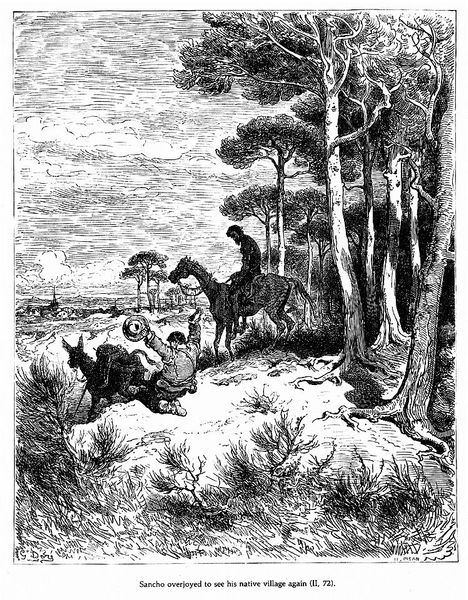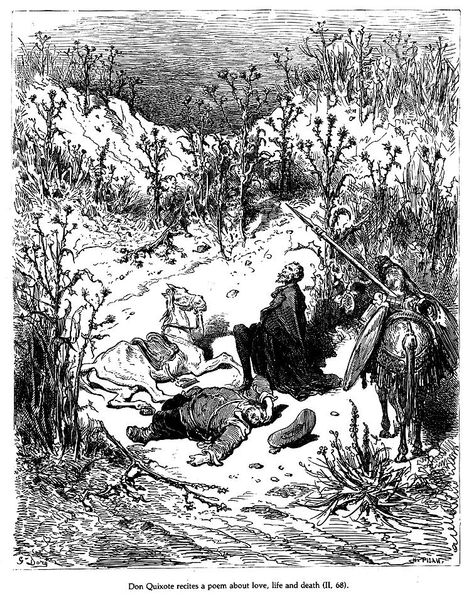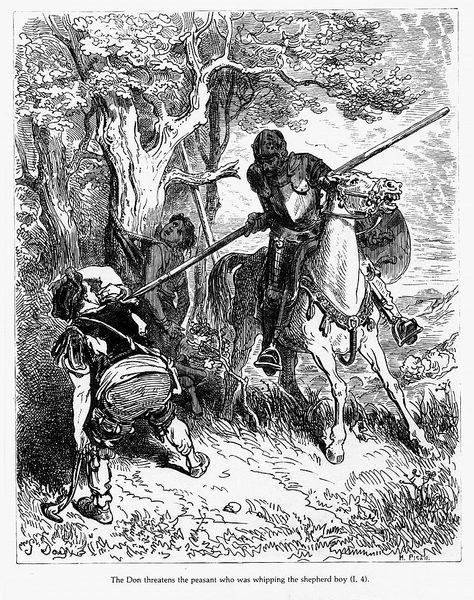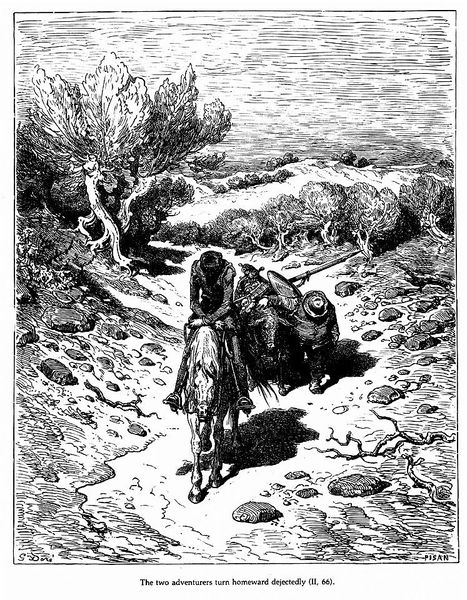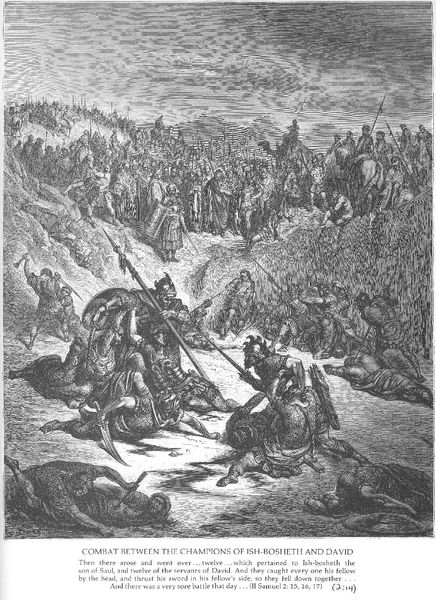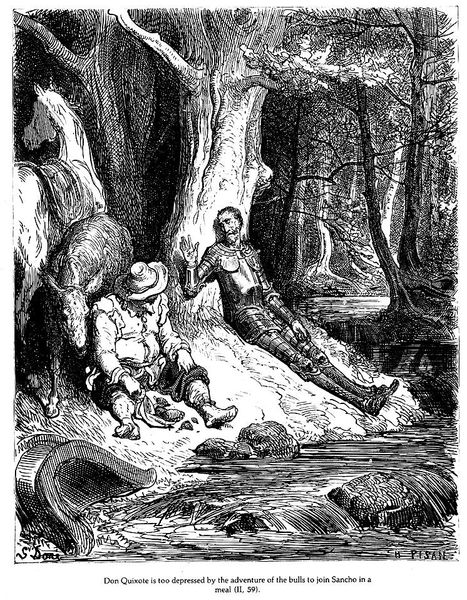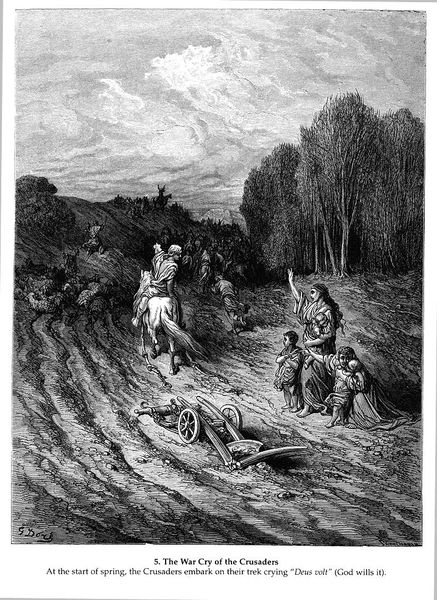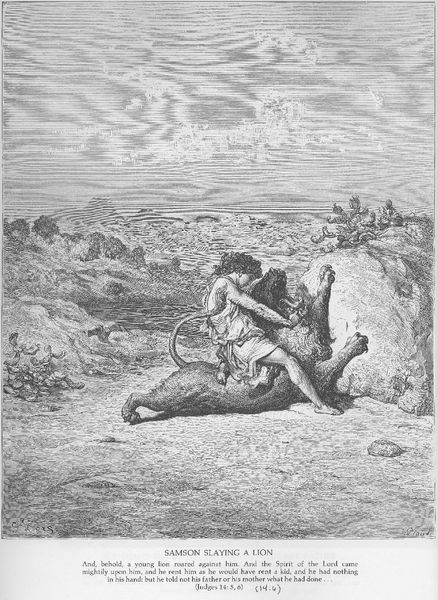
drawing, paper, ink, engraving
#
drawing
#
narrative illustration
#
narrative-art
#
pen illustration
#
landscape
#
figuration
#
paper
#
ink
#
romanticism
#
detailed illustration
#
history-painting
#
engraving
Copyright: Public domain
Curator: This is an illustration of "Don Quixote," by Gustave Dore. The piece is done in ink and engraving, depicting a scene of figures and animals amid a textured landscape. Editor: My first impression is one of harsh contrasts. The intense detail of the linework feels almost oppressive, mirroring, perhaps, the internal turmoil of the protagonist. It's fascinating how Dore achieves depth with such limited tonal range. Curator: Indeed, Dore uses hatching and cross-hatching meticulously, creating both shadow and texture. Notice how the figures are arranged; the slumped body of Don Quixote, the attending figures, all directed towards the lower center, generating a stark narrative focus, while the broader landscape almost dwarfs the protagonists, diminishing the import of his individual struggles. Editor: And the way the landscape is rendered really emphasizes its material presence. You can almost feel the scratchiness of the dry earth, see the strain on the animals. Dore makes you consider the hard realities underlying the romantic idealism of the Don himself. Consider also, if you will, the production of this engraving, each line etched into a metal plate through arduous labor, later to become reproduced illustrations within a mass market novel for consumption. It speaks to a shift of how image-making served a capitalist society. Curator: Yes, and consider the formal use of the landscape's rising contours. These lines draw your eye upwards to the sky, mirroring a sense of longing, perhaps emblematic of Romanticism's yearning for transcendence. Dore’s landscapes in his illustrations frequently adopt very clear geometries with symbolic function. Editor: It makes you wonder about Dore’s own investment in these romantic ideals. The meticulous craftsmanship clashes somewhat with the book's critique of noble idealism. Was he celebrating Don Quixote’s journey or interrogating its distance from everyday toil? I feel we must reflect on that potential irony in the making. Curator: Perhaps Dore's choice of medium contributes to this. Engraving is traditionally a reproductive medium, and that detail enhances accessibility. And if it seems contradictory, this speaks more to Dore's skill, complicating the role of artistic representation. Editor: It's a powerful work, demonstrating how an image’s social construction plays with the heroic narrative being depicted. Curator: A confluence of visual form and socio-cultural dynamics make the work uniquely resonant.
Comments
No comments
Be the first to comment and join the conversation on the ultimate creative platform.
